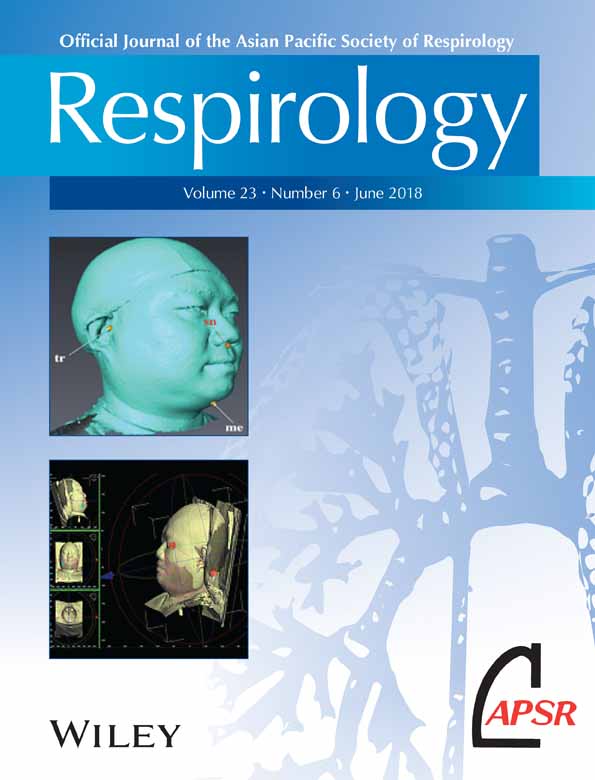Vitamin D deficiency can impair respiratory health
Abstract
A crisp understanding of the roles of baseline blood level and supplementary vitamin D in respiratory health has been elusive, partly due to flawed calculation reports (meta-analyses), as well as clinical studies designed wrong or too small to yield useful data. To the contrary, in this issue of Respirology, the report by Dr Mulrennan et al.1 from the Busselton Healthy Ageing Study reports a clever, straightforward, robust and unvarnished study associating a small benefit of vitamin D against asthma, bronchitis, wheeze and chest tightness in adults with sufficient 25-OH vitamin D blood levels.
It is worthwhile to begin by considering some of the intrinsically flawed studies clouding the field. Two meta-analyses stand out. One, analysing the effect of vitamin D supplementation on childhood asthma, excluded 96 of 100 eligible prospective studies because the original study authors did not respond to the meta-analysers’ query for help.2 Another purporting to analyse placebo-controlled asthma studies, reported again with a substudy,3, 4 found a paediatric study5 to be highest quality that in fact gave identical oral doses of vitamin D, 400 IU/day, to both control and treatment groups on every study day but the first day, for 6 months. Unsurprisingly, that study found similar event rates of need for corticosteroid treatment (13/11 vs 9/11). A stew of different study outcomes (spirometry, reported asthma attacks in a study of influenza prevention, GINA asthma control scores, etc.) were melded in the these latter two meta-analyses. Another pair of placebo-controlled randomized trials in adults5, 6 chose time to the first acute asthma attack as the primary outcome and found no significant differences. Doctors studying chronic multifactorial diseases with recurrent events, such as heart failure and asthma, are unwise to let time to first failure doom an investigational treatment, because failures are inevitable in patients with moderate-to-severe disease, and power to show a difference is unwittingly sacrificed.7 If studies of hypoglycaemic drugs used time to first blood glucose over 7 mmol/L (126 mg/dL) instead of elevated HbA1c to doom a therapy, we would have neither insulin nor oral hypoglycaemics, so long as patient subjects ever snuck a sugar cookie. Distilling explanatory power or practice-changing information about the role of vitamin D in respiratory health has been difficult when such studies suck up so much of the oxygen in the room.
Dr Mulrennan et al. instead took a cross section of adults registered to vote aged 46–69 years (note that enrolment to vote is compulsory in Australia), collected their survey questionnaire and had spirometry data and vitamin D blood levels in the vast majority. They stratified the patients by baseline vitamin D level as deficient (<50 nmol/L), sufficient (50–100 nmol/L) and high (>100 nmol/L). They compared patient symptoms using key adjustments (Model A), further adjustments (Model B) and even more sophisticated adjustments (Model C). Moreover, they not only analysed the presence or absence of symptoms by logistic regression and odds ratios (OR) but also used linear regression on the continuous numerical variables from spirometry across the three models. Amateurs might squeak complaints about multiple comparisons but this plethora of different critical looks at the same patients instead makes the findings more robust reproduced over and over again in the patient sample. And repeated over and over again they were: The survey subjects with baseline 25-OH vitamin D levels <50 nmol/L (<20 ng/mL) had significantly more asthma, bronchitis, wheeze and chest tightness, and lower forced vital capacity, no matter how they were looked at. But the paper’s Tables 2 and 3 show the differences, although present, were small. For example, the OR were all far less than 2.0.
Future observational studies like this one might make their findings even more robust by looking for residual confounding via employing negative controls in a ‘falsification’ analysis8: Test the same groups for outcomes unrelated to vitamin D status, such as incidence of urinary tract infection or cancer. Absent residual confounding and interaction, the differences found for asthma, bronchitis, wheeze, etc., should go away for the unrelated outcomes.
In our prospective randomized intervention study, we also found significant but not especially dramatic differences in the frequency of any asthma attack needing the emergency department and in the average number of asthma attacks per child between child asthmatics with vitamin D deficiency receiving high-dose versus maintenance-dose supplementation, and solely in the quartile of children with the very lowest levels (7.5–27.5 mmol/L, 3–11 ng/mL). Moreover, the significance disappeared by 6 months of treatment.9 A study of pregnant women at risk of having a child with wheeze or asthma found a 6% reduction by 3 years in the children of pregnant women receiving a higher dose supplement compared with the maintenance dose of 400 IU/day.10 Mulrennan et al. had 8% of their patient sample (401 patients) with baseline vitamin D levels below 50 nmol/L—perhaps, they might find an accentuated difference if they re-examined their patients with baseline levels below 25 nmol/L, if they have enough to examine.
Regardless, the evidence is becoming clearer: vitamin D deficiency, particularly severe deficiency, appears to be associated with worse asthma, which can be repaired somewhat by supplementation to raise 25-OH vitamin D blood levels. For non-vitamin D-deficient asthmatic patients, vitamin D is not an asthma therapy. For me, as a clinician investigator, the evidence is clear enough to recommend a vitamin D supplement to patients with asthma who have 25-OH vitamin D levels below 50 nmol/L (20 ng/mL), although somewhat lower baseline levels may someday be found sufficient for best asthma control. While vitamin D deficiency may worsen asthma, vitamin D treatment in sufficient patients is unlikely to help it. We have Dr Mulrennan et al. to thank for reinforcing that conclusion in their robust study of Western Australian adults.




